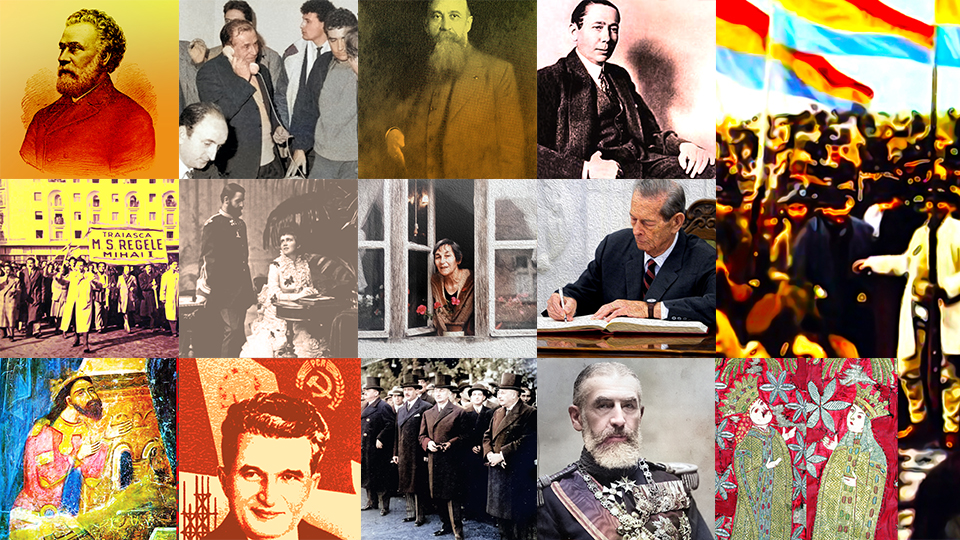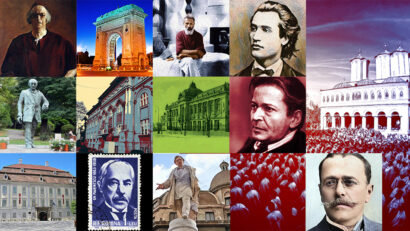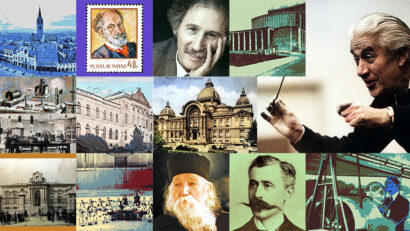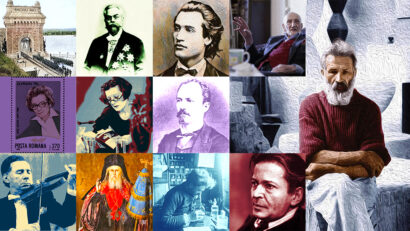Colțea Street
Every big city has a kilometer 0 that marks its symbolic center, used to measure and organize urban space. The kilometer 0 of Bucharest is Colțea street, where it seems that present-day Bucharest started to develop 150 years ago.

Vlad Palcu, 27.10.2024, 14:00
Over 1703-1707, Mihai Cantacuzino, a member of a famous noble family, built a hospital and a school on the estate of Colțea Doicescu. The first name of this great boyar, who was in charge of supplying the royal court, remained inscribed in the topography of the city to this day, and will definitely remain a memorable landmark. Colțea’s estate stretched from the present-day kilometer 0 milestone northwards, and from there the center of today’s Bucharest started to flourish. Starting with the end of the 19th century, the estate was systematized, while a side street of today’s Brătianu boulevard, linking the hospital to Saint George Church, where the kilometer 0 milestone is located, preserved its name, Colțea Street, a small urban relic reminding the dwellers of the capital-city of something that existed 150 years ago.
On what was once the old street of Coltea, with its famous tower located in the middle of today’s Brătianu boulevard, a tower demolished in 1888, the central artery of the present Bucharest emerged, at the crossroads of the current Carol and Elisabeta boulevards east-west, and Brătianu and Magheru boulevards north-south. Colțea Street would help the new Bucharest breathe more freely by reducing overcrowding on Victory Road, the first north-south artery of Bucharest. Museographer Cezar Buiumaci from the Bucharest City Museum is in charge of the memory project devoted to Colțea Street. With a map in front of your eyes, it is much easier to follow the old route of the famous street. Cezar Buiumaci provides all the details that help build a mental map, with the help of works of art by 19th-century artists who painted the street. Everything falls in place as one pictures the street from Șuțu Palace, located just across Colțea Church.
“Here we are, on Colțea Street, just across Colțea Church. This is where the slums and Colțea tower were, landmarks in the middle of our city that back then were on the outskirts. This is Colțea, a winding street, where people could find the Royal Court, Colțea Inn, Colțea Tower, a street that started from Saint George square, from the Church of Saint George, at the crossroads with Lipscani street, that took you all the way to Clemence Street. That’s where it ended, the present-day C. A. Rosetti Street”.
A walking tour of Bucharest is even more helpful in restoring the memory of the old Colțea Street. Cezar Buiumaci told us how far Bucharest expanded starting from the new arteries drawn under mayor Pache Protopopescu, a name that must also be remembered.
“Here, where Colțea Street ended, was the end of the city. It was the peripheral area on the current road that starts from North Station, goes on Titulescu road and reaches Victory Square. It continues on Iancu de Hunedoara, on Ștefan cel Mare roads and so on. It is the road that surrounds the city, a peripheral road based on the French model. How would Colțea Street look later, when it was designed? This happened in the second half of the 19th century, at the end, when the boulevard was built, the east-west artery that connected Obor to Cotroceni. It was the first boulevard. When it was marked, it didn’t even have a name, it was known simply as the Boulevard, it was the only one in the city. And on it were the most important edifices of the developing Romanian state, such as the Ministry of Agriculture or the Ministry of War. Nearby we have the hospital, just across the street, the first hospital in Wallachia, we have the University, we have the University Square which is opposite the University. It was a semi-circular square where we find the statues laid out like in a national pantheon. The boulevard was set up like that due to the May 10 parades, which were organized here on the national day”.
Bucharest under the crown and scepter of King Carol I was becoming an increasingly European city. Cezar Buiumaci points out only a few of the key landmarks that appeared on the new boulevards in Colțea Street.
“The statue of Michael the Brave was placed there in 1874, 150 years ago. Then followed the declaration of Carol I, which assumed the union of all Romanians under his reign, there were also declarations of independence and unification that Carol made during his reign. Further on, one came across a number of major institutions, print shops, there was the Military Circle, across the street there was a hotel, the Grand Hotel du Boulevard, a hotel that took its name from the boulevard. Then we have other important institutions, Eforia, a series of military institutions, the Donation House, and then the Official Gazette, but also Cișmigiu Park and a series of restaurants and cinemas”.
Colțea Street in old Bucharest no longer exists today, but it is the one that gave birth to the city. And the iconographic sources of the time still keep it alive. (VP)






























